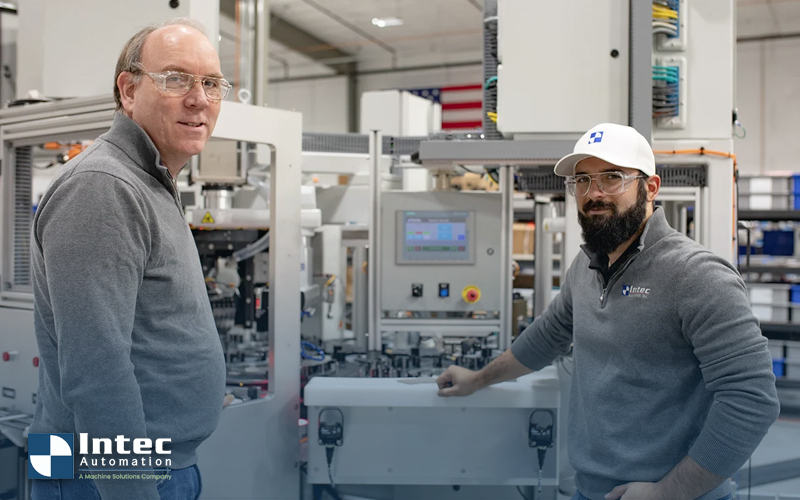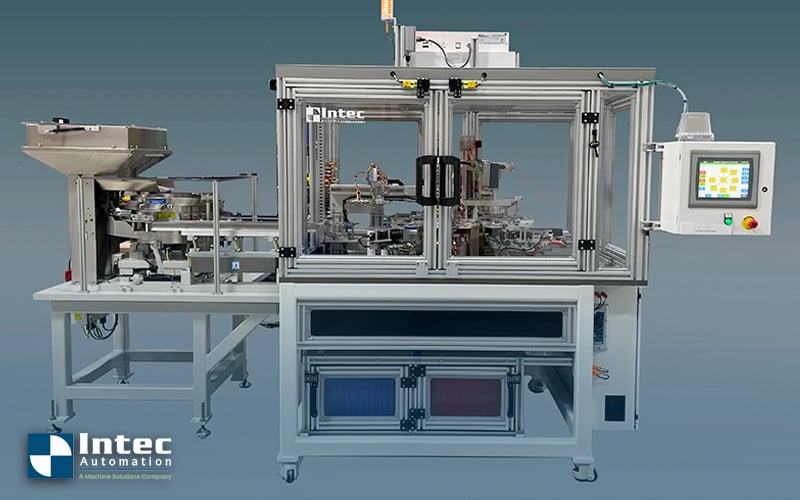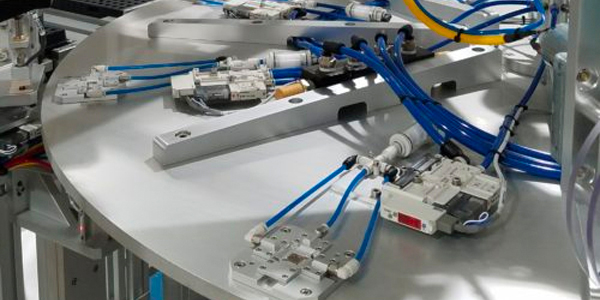A More Profitable Alternative to Contract Manufacturing Without Sacrificing Expertise
Over the last few decades, contract manufacturing has become an effective business strategy for expanding organizations. However, recent disruptions...
2 min read
 John A. Weismantel
:
Feb 13, 2025 3:02:52 PM
John A. Weismantel
:
Feb 13, 2025 3:02:52 PM

Matt Bresnahan, Intec’s General Manager, explains the six project stages involved in creating a custom automation solution. He used the example of scaling your current manual process to demonstrate. Check out the video or read the transcript below to learn more.
Customers will often reach out to Intec with a goal to move from a very manual automated process to a semi-automatic or fully automatic process. During that phase our responsibility is to work collaboratively with them, ask a lot of questions, understand what their pain points are, and not over automate.
If we can focus on small wins with our customers and help them gain traction on automation, gain small wins within their own facility, it's going to help the long-term success of the project.
 Designing and building the assembly cell
Designing and building the assembly cellDuring the design phase of an assembly cell, communication is probably the most critical aspect of the process. The more open, honest and transparent communication that we can have with our customers is going to better prepare them, and us, for success in the project.
One of the things that Intec does that's a little bit different is we have three defined design reviews with our customers. When we get to that final design review, they know exactly what to expect, we know what to expect and it goes off very smoothly.
Critical to the programming phase of a project is clear definition in how that customer wants to operate their equipment. Spending time upfront to understand what they want to see from a fault recovery, from starts and stops. Knowing how they want to handle those situations is one of the most important things to make sure it’s going to be user friendly when it lands on the customer's floor.
A successful factory acceptance testing phase of a project starts with having a defined protocol from the onset of a project. If we know exactly what the customer needs and expects to see when they come on site and we build that into the early phases of the project, when they are here, it's usually a check the box kind of thing.

Installation and start-up is probably one of my favorite things to talk about when it comes to a machine. Because we spend so much time on making sure our equipment is finished on our floor, installation and start-up in many cases the customers can do alone. But, if they need our help, we are always there to help them, and we are usually able to start our equipment up in less than a week.
Intec Automation has a dedicated aftermarket and services organization. Once our equipment is deployed to the field we are not done supporting our customers. If they have a need we want them to know they can pick up the phone and call us. We have a global service organization available at their disposal, and we work with them to make sure the equipment is meeting their expectations.
Intec Automation specializes in designing and building innovative custom automation solutions for a wide range of industries, including medical devices, aerospace, and advanced manufacturing. With a focus on precision engineering, advanced technology integration, and customer collaboration, Intec delivers tailored systems that streamline production, improve efficiency, and ensure quality. From concept to completion, Intec’s team of skilled engineers and technicians are committed to solving complex manufacturing challenges and driving operational excellence.

Over the last few decades, contract manufacturing has become an effective business strategy for expanding organizations. However, recent disruptions...

The clean sheet design and build of custom automated solutions for complex manufacturing applications requires a system integrator with a proven...

With its deep-rooted foundation of over two decades of experience in factory automation, specialty equipment and clean-sheet design and build of...